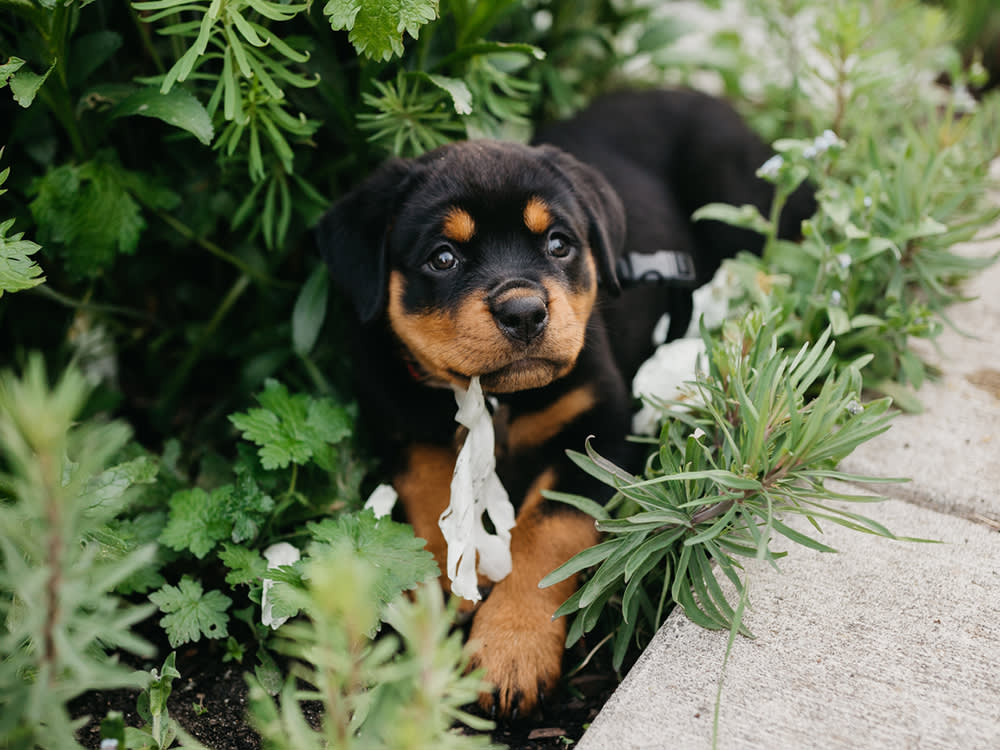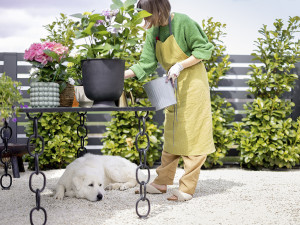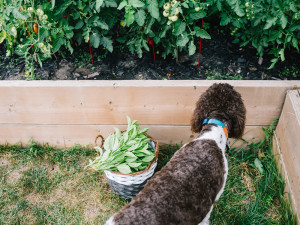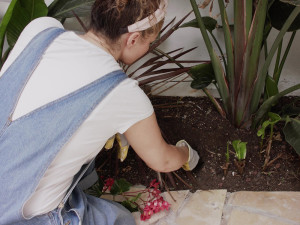Snail Bait Poisoning in Dogs: Symptoms, Treatment, and Prevention
It may protect your plants, but at what cost? A veterinarian explains how this toxin may keep your garden safe — but it’s extremely toxic to dogs. Here’s everything you need to know.
Summer gardens are full of life: dinnerplate-sized dahlias are blooming, hummingbirds are all aflutter, and... snails leaving a slimy trail in their wake as they devour your perennials. The season brings snails, but also their antidote, snail bait — which is super toxic to dogs. Gardeners around the country use snail bait to keep plant-munching snails, slugs, and their ilk out of gardens. During the spring and summer months, I treat pups poisoned by it at least once a week. Keep reading to learn how to keep your dog safe, plus non-toxic alternatives to keep those slimy critters out of your garden.
What is Snail Bait, Exactly?
The toxic substance found in snail bait is a compound called metaldehyde, and of course, malicious poisoning is generally not the issue. The majority of metaldehyde toxicities are accidental, either due to lack of knowledge of its dangers or the assumption that the compound was properly stored or applied. But as we all know, dogs are notorious for getting into things they shouldn’t and places you think they can’t!
Save on the litter with color-changing tech that helps you better care for your cat.
Snail bait is formulated in chewable pellets that are flavored with molasses, apple, and bran to attract snails and slugs. Unfortunately, dogs find the bait a tasty treat as well. Snail bait is also available in liquid and powder forms, which can get onto paws and be licked off with normal grooming. Additionally, many of these products also contain insecticides, which make the exposure potentially even more toxic.
Snail bait is highly toxic and even small amounts are enough to cause poisoning in dogs. Less than a teaspoon per 10 pounds of body weight can cause life-threatening clinical signs. It can not only hurt dogs, but it can be fatal.
Symptoms of Snail Bait Poisoning in Dogs
Signs of metaldehyde poisoning begin quickly after the bait is ingested. Generally, anxious behavior with mild twitching comes first. This progresses to uncontrollable and severe twitching, followed by seizures and possibly death if not treated promptly.
Severe twitching equates to constant muscle contractions, which can raise body temperature so high that permanent brain damage occurs. When that happens, it’s often referred to as “shake and bake syndrome.”
How Snail Bait Poisoning in Dogs is Diagnosed
Generally, twitching is the main giveaway, and a diagnosis can be made even if there’s no known history of snail bait exposure. However, a radiograph may be recommended to evaluate the dog’s stomach contents. If there is a known exposure, it’s helpful to bring the snail bait package along to the vet’s office, so the ingredients list can be professionally examined.
Treatment for Snail Bait Poisoning in Dogs
There is no direct antidote for snail bait toxicity. Treatment is aimed at controlling the dog’s symptoms, which may include forced vomiting to empty the stomach, supportive care with IV fluids, medications to control twitching or seizures, enemas to help rid the body of the toxin, and charcoal to help absorb any substance that remains.
At home, hose down your yard with water to dissolve any remaining bait, and restrict your dog from the area for at least two weeks.
Recovery from Snail Bait Poisoning in Dogs
Recovery is largely determined by how much poison is ingested, how quickly therapy is initiated, and the dog’s general health. While this is a serious type of poisoning, most dogs fully recover if treated promptly and properly. If your dog is not successfully treated for snail bait poisoning, death can occur within four to 12 hours.
Alternative, Non-Toxic Snail Deterrents for Your Garden
To keep your dog safe, you might try a more natural route and accept the “art” snails leave behind on some plants. However, if that doesn’t sound fun, there are a few more effective options to keep slimy predators away.
Wrapping self-adhesive copper barrier tape (available in many garden supply stores) around the rim of plant pots or containers deters slugs and snails with a tiny positive electric charge given off by the tape.
You can also purchase predatory snails known as Decollate snails — they do not pose a health hazard to pets, birds, or other mammals and have been used in gardens throughout the temperate regions of the United States for nearly 150 years. At night, they come out of the leaves, mulch, or soil and eat the eggs of slugs and snails, and will also feed on young snails. The Decollate Snail can live for two years, and lays a small amount of eggs on a regular basis, so your garden should constantly have new protectors.
Option three: snail traps. You can either purchase some, or make a DIY versionopens in new tab. As always, prevention is better than cure. And remember, if a snail bait accident happens with your dog, it’s critical to seek veterinary attention immediately. Every minute counts!









